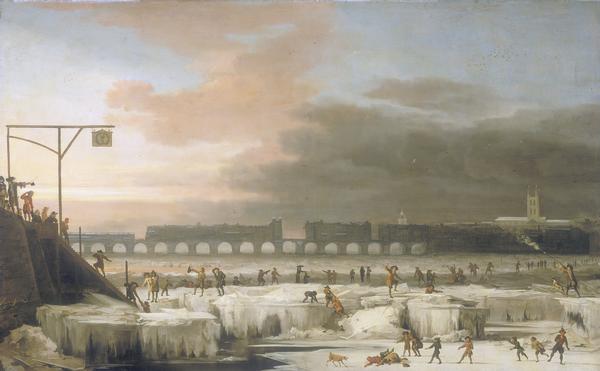Just as rain is Madam How's gentle spade, glaciers are her ice-ploughs. Great imagery. :)
(Note: If you need the actual links in the body of the post, will you let me know in the comments? Otherwise, for the rest of the book I will embed links to make the posts tidier. Also, I have added the list of notes to my sidebar so previous chapters are easier to find.)
*Pictures of and information about limestone: http://www.mii.org/Minerals/photolime.html
*Scrapes on rock (also called striations) caused by glacial activity: http://www.geography-site.co.uk/pages/physical/glaciers/images/stria01.jpg
*Rosenlaui Glacier in Switzerland: http://en.wikipedia.org/wiki/File:Rosenlauigletscher_vom_Tal_aus.jpg
*In 1891(?), the Rosenlaui Glacier melted more than it had done in many years and revealed Mr. Kingsley's piece of scraped limestone. (Page 99)
*Please note that it is now illegal to remove stones or other artifacts from many nature areas worldwide, although it was not in Mr. Kingsley's time.
*The rocks in Snowdon (Snowdonia Rocks) and lots of educational resources: http://www.eryri-npa.gov.uk/education/introduction/what-is-it-like/snowdonia-rocks
*Snowdon is in Wales.
*Picture of Franz Josef glacier in New Zealand: http://en.wikipedia.org/wiki/File:Franz_Josef_glacier.JPG
*Arial view of the same glacier: http://en.wikipedia.org/wiki/File:Looking_down_the_Franz_Josef_Glacier_from_above_the_Melchior_Glacier.jpg
*More information than you ever wanted to know about glaciers: http://www.geography-site.co.uk/pages/physical.html#Glaciers
*Uniformitarianism: Mr. Kingsley accepted the Theory of Evolution, and on page 100 he declares his uniformitarian position, "And so I treasure this, as a sign that Madam How's ways do not change nor her laws become broken; that, as that great philosopher Sir Charles Lyell will tell you, when you read his books, Madam How is making and unmaking the surface of the earth now, by exactly the same means as she was making and unmaking ages and ages since..." Uniformitarians believe that 'the present is the key to the past,' or all geological changes in the past occurred as the result of the same natural laws and processes that change the Earth's face today. This is where "millions of years" comes from in the Theory of Evolution. http://en.wikipedia.org/wiki/Uniformitarianism_(science)
*FYI: Young-Earth creation scientists generally take the position of Catastrophism, the idea that Earth's appearance is often altered by sudden, violent, possibly worldwide events (ie., Noah's flood). Some catastrophists do not believe that the present is necessarily the key to the past, but that past catastrophic events may even have changed the geological and climactic 'habits' of the Earth, which would explain why the geologic column is jumbled in some areas. http://blogs.answersingenesis.org/blogs/ken-ham/2006/09/28/worldwide-catastrophism-its-becoming-popular/
*Sir Charles Lyell: the foremost geologist in Kingsley's time. Lyell's book,_Principles of Geology_, popularized the uniformitarian viewpoint.
*Grinding whole mountains into plains (a glacial plain in Iceland): http://en.wikipedia.org/wiki/File:Skei%C3%B0ar%C3%A1rsandur,_Iceland.jpg
*The Crimean Winter (pages 100-102): I think he is talking about a Crimea-like winter IN England. (Crimea is a republic near Ukraine on the Black Sea.) 1837-38 was a very severe winter for the British Isles, with many days of below-zero temperatures. The Thames River froze over.
*A painting of the frozen Thames from the 1600s. This is not the same freeze Kingsley is talking about, but it is the same river:

*There was a cool weather period in Europe, known as the Little Ice Age, from the 1300s to the late 1800s/early 1900s. Kingsley doesn't speak of this, but it seems relevant to me: http://en.wikipedia.org/wiki/Little_Ice_Age
*A portion of Perito Merino Glacier falls in Argentina: http://www.youtube.com/watch?v=-wgeG1B3HG8&feature=related
*Sounds aboard an ice-breaker ship: http://www.youtube.com/watch?v=4cMgYRHucoY&feature=related
*_Frost and Fire_, by John Francis Campbell, is available on Google Books: http://books.google.com/books?id=_oosAAAAYAAJ&dq=frost+and+fire+north+america&source=gbs_navlinks_s
*The weight of ice and snow can damage trees: http://www.mobot.org/gardeninghelp/images/Pests/Pest1977.jpg
*Worst snowstorms in U.S. history. Be sure to scroll down and look at the picture of the Knickerbocker Snowstorm, in which a movie theater roof collapsed under the weight of 20 inches of snow: http://thehistorytavern.blogspot.com/2010/12/worst-snowstorms-in-history.html
*Esquimaux in Arctic regions: Yupik, Inuit and Aleutians, also known as Eskimos, traditionally live in Siberia, Alaska, North Canada and Greenland. http://en.wikipedia.org/wiki/Eskimo (scroll for pictures)
*definition of glacier (page 104): "...a river of ice, fed by a lake of snow. The lake from which it springs is the eternal snow-field which stretches for miles and miles along the mountain tops, fed continually by fresh snow-storms falling from the sky. That snow slides off into the valleys hour by hour, and as it rushes down is ground and pounded, and thawed and frozen again into a sticky paste of ice, which flows slowly but surely till it reaches the warm valley at the mountain foot, and there melts bit by bit."
*moraine: http://www.geography-site.co.uk/pages/physical/glaciers/images/climb01.jpg
*glacial river carrying silt (rock flour) into a lake: http://en.wikipedia.org/wiki/File:Muru_memurubu.jpg
*Ullswater: http://commons.wikimedia.org/wiki/File:Ullswater_from_Pooly_Bridge_engraving_by_William_Miller_after_T_Allom.jpg
*Windermere: http://en.wikipedia.org/wiki/Windermere
*A discussion of the Ice Age at Answers in Genesis, which also contains some good pictures and diagrams of ice flow: http://www.answersingenesis.org/articles/nab/where-does-ice-age-fit
No comments:
Post a Comment